Introduction
Splint is a kind of device to support affected or injured limb or body parts. Splint can be made by anything solid and hard such as wood, board and thermoplastic. Splint is effective to reduce risk or further injury and temporary treatment before get a proper treatment in hospital. Paramedic will use thermoplastic splint or “POP”, which is a proper support device to support injured limb.
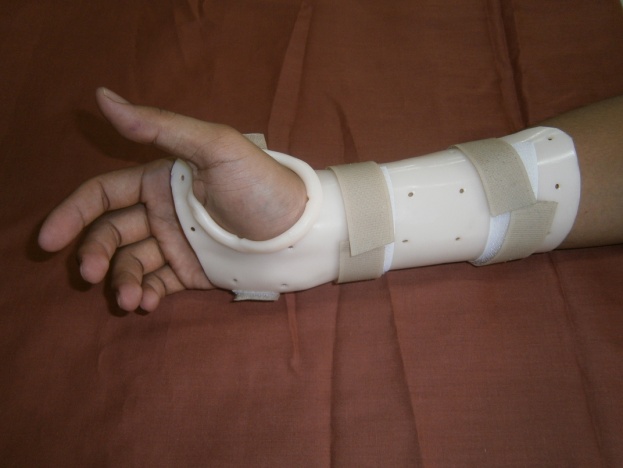 |
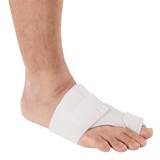 |
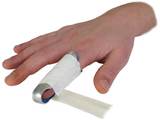 |
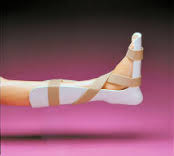 |
Why Need To Use Splint?
Splint is very important device to support and avoid further injury or damage to the affected limb.Splint are used as external body support and lock the unnecessary movement. Other than that, splint are used to facilitate healing by resting the injured limb in a proper position and to reduce swelling. There are few functions of splint as :
- to support and reduce joint pain
- to limit movement and facilitate healing of injured limb
- to support injured muscle
- to support broken limb
- to limit unnecessary movement on affected limb
- to encourage function
- to strengthen the weak muscle
- to avoid deformity of the joint
- to rest and reduce muscle pain
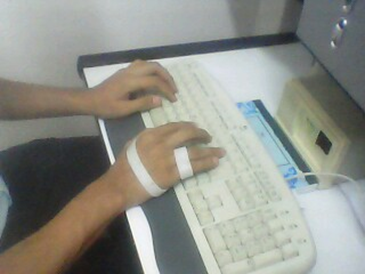 |
 |
How Long To Use Splint ?
Once you are injured or sprain, you are advice to put on splint. The used of splint are variety, it is closely related with the types on injury. For example, if you are having simple broken bone on the hand, you are advice to put on splint for at least two to six weeks , but if you are having a broken leg, you might need to use a splint up to six months. If you have symptoms of numbness and pain on your hand, you might need to use splint during working hours just to reduce symptoms.
A specialty about splint is, easy to use. You can take off and put on by yourself for hygiene purpose. But usually , for healing process, you are not allow to frequently take off your splint.
What You Can Do If You Are Having An Allergic Reaction?
Prolong application of splint may be will cause an allergic reaction such as :
- itchiness on your skin,
- redness along the edge of splint and
- swelling.
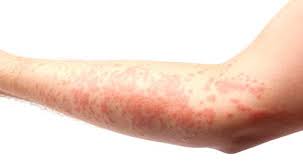 |
When these happen, you have to take off the splint and clean your skin or wash the splint. Allergic reaction also can happen because of poor hygiene and sweating.
If these thing happen, you are advice to seek for further treatment or advice from your therapist to avoid more serious reaction. Not only because of an allergic reaction, if you find your splint are not comfortable, too tight and restricted you in performing daily routine, you can always seek an advice from your Therapist.
How To Take Care Of Splint ?
Any types of splint that you use, you have to know how to take care of it. This is very important to avoid infection and to ensure you get a maximum healing or benefit from applying splint. You must always clean the splint with soft detergen . Splint are really sensitive to heat, so you are advice not to put your splint near or in humid area. Kindly not to use any oilment or lotion when applying splint.
Reference:
- Occupational Therapy for Physical Dysfunction (6th Edition).Catherine A. Trombly Latham.
- Dorland’s Medical Dictionary for Health Consumers. © 2007 by Saunders, an imprint of Elsevier, Inc.
- Ewing Fess E, McCollum M. The influence of splinting on healing tissues. Journal of Hand Therapy. 1998; 11:157–161. [PubMed]
- Rives K, Gelberman R, Smith B, Carney K. Severe contractures of the proximal interphalangeal joint in Dupuytren’s disease: results of a prospective trial of operative correction and dynamic extension splinting. J Hand Surg [Am] 1992;17:1153–1159. [PubMed]
- Webb CW. Metacarpal fractures. In: Eiff MP, Hatch RL, eds. Fracture Management for Primary Care. 3rd ed. Philadelphia, Pa: Saunders Elsevier; 2011:chap 4.
| Last Review | : | 28 August 2020 |
| Writer | : | Juliana Bt Ibrahim |
| Accreditor | : | Jamilah Bt Abdul Kuthoos |
| Reviewer | : | Tan Foo Lan |







